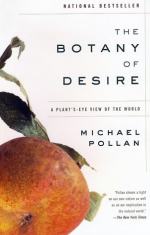
|
| Name: _________________________ | Period: ___________________ |
This test consists of 15 multiple choice questions and 5 short answer questions.
Multiple Choice Questions
1. Johnny Appleseed raised ______ for sale and subsequent transplantation.
(a) Apple trees.
(b) Apple cuttings.
(c) Apple seeds.
(d) Apple clones.
2. ______ is the unit of money used in Holland. After 1635, the price of a bulb of Switzers went from 60 to 1500.
(a) Dollars.
(b) Euros.
(c) Marks.
(d) Guilders.
3. The book states that all of the following are capable of prodigies or of shifting themselves in form except _______.
(a) Tulip.
(b) Rose.
(c) Lotus.
(d) Orchid.
4. Apple trees are able to reproduce _______ which helps to facilitate their ability to be grafted to a root stock.
(a) Periodically.
(b) Daily.
(c) Sexually.
(d) Asexually.
5. Flowers are unable to choose ______ and therefore must rely on extravagant displays to attract insects.
(a) Mates.
(b) Climate.
(c) Weather.
(d) Soil.
6. Appleseed had originally come west from the state of _____ when he was 23 years old.
(a) New York.
(b) New Hampshire.
(c) Massachusetts.
(d) Maine.
7. Appleseed used most of his crops in order to make ______, which led him to be thought of as an 'American Dionysus.'
(a) Apple vodka.
(b) Apple pie.
(c) Apple crisp.
(d) Fermented cider.
8. Since Appleseed raised his trees from seed, most of the fruit was not suitable for _______.
(a) Making cider.
(b) Selling.
(c) Eating.
(d) Composting.
9. Pollan asserts that Jews and Christians discouraged devotion to flowers because it was a threat to _______.
(a) Monotheism.
(b) Deism.
(c) Tropism.
(d) Polytheism.
10. The book compares tulips in fields to ______ or lipsticks, merely flashes of bright color on the horizon.
(a) Popsickles.
(b) Lollipops.
(c) Paintbrushes.
(d) Eyeliner.
11. The book states that almost all cultures around the world love flowers with the notable exception of _______.
(a) Asia.
(b) Australia.
(c) Canada.
(d) Africa.
12. The process through which humans and plants have shaped each other over the years is known as _______.
(a) Co-emergence.
(b) Co-evolution.
(c) Co-dependence.
(d) Co-occurence.
13. ________ was an American Pioneer and introduced the apple in the Midwestern United States.
(a) John Calhoun.
(b) Phil Forsline.
(c) William Jones.
(d) John Chapman.
14. Instead of wind and water moving genetic material around, the emerging plants were now enlisting the help of ______.
(a) Viruses.
(b) Animals.
(c) Bacteria.
(d) Mold.
15. The apple does not breed simply from seed. Thus all trees that produce the same type of apples are _______ of the original tree.
(a) Clones.
(b) Roots.
(c) Seeds.
(d) Leaves.
Short Answer Questions
1. According to the book, the plants that form flowers and then encased seeds are known as ______.
2. Fortius, a professor, could be seen patrolling the streets of the city, ______ any tulip that he encountered.
3. Before flowers, sexual reproduction consisted of _____ being dispersed by the wind to be caught by other plants.
4. The opposite condition to the collective flower frenzy in which a person's depression keeps them from enjoying flowers is ______.
5. The book states that certain flowers are reminiscent of Greek Gods. The rose and the peony are stated to be flowers of ______.
|
This section contains 439 words (approx. 2 pages at 300 words per page) |

|




